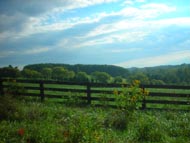Baden H, Roach DA. The effects of age on the demography of a perennial plant depend on interactions with size and environment. Journal of Ecology. 2021;109:1068–1077.
Abstract
- Age-dependence of the demographic rates survival, fecundity and individual growth is a fundamental aspect of population biological theory. Knowledge about plant ageing can also be important for conservation and agriculture as it will improve the accuracy of population viability assessments and long-term performance assessments in perennial crops. Recent studies show age effects on demographic rates for several plant species, yet much remains to be learned about the patterns and mechanisms of plant ageing, particularly about how age effects interact with the environment and with plant size.
- We collected age-and-size-based demographic data, as well as individual-based environmental data, for the perennial herb Plantago lanceolata in Denmark over three annual transitions (4 years). We combined frequent field monitoring of carefully mapped individuals with the underused technique of root histology to determine age of herbaceous plants. We used generalized linear mixed effects models to assess how age, soil properties and year influenced survival, growth and reproduction.
- Our results show no strong evidence of consistent age declines, rather, we found mostly positive effects of age on vital rates. For all vital rates, i.e. survival, growth, flowering and reproductive output, age effects also differed significantly among years. Additionally, we detected an interactive effect of age and size in the growth model. Size, and temporal and spatial environmental variation also affected vital rates independently of age.
- Synthesis. Our study shows that age-dependence of demographic rates can depend both on individual size and environmental variation. These results suggest that a consideration of potential age-interactions may improve the accuracy of comparative studies of ageing and population projections. Moreover, this study shows that much is still unknown about how plant ageing can be affected by the environment.
